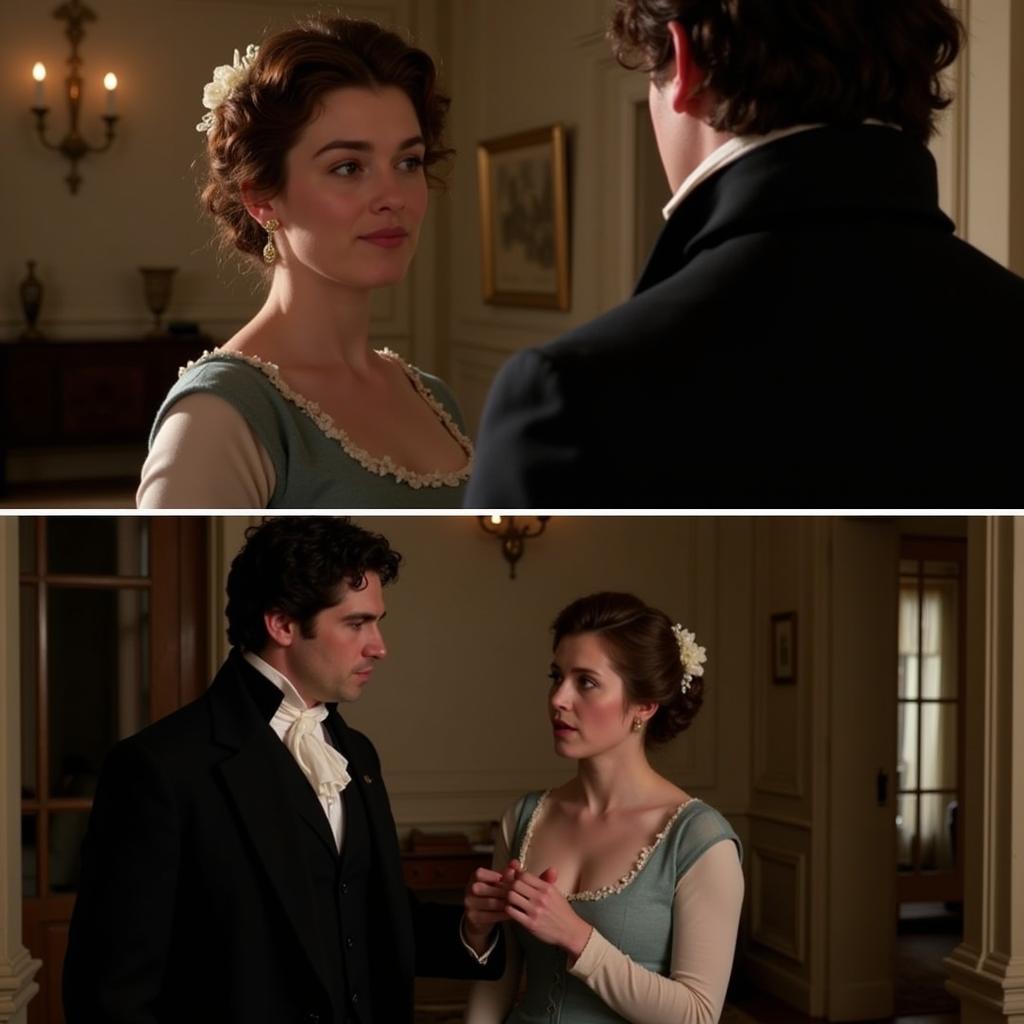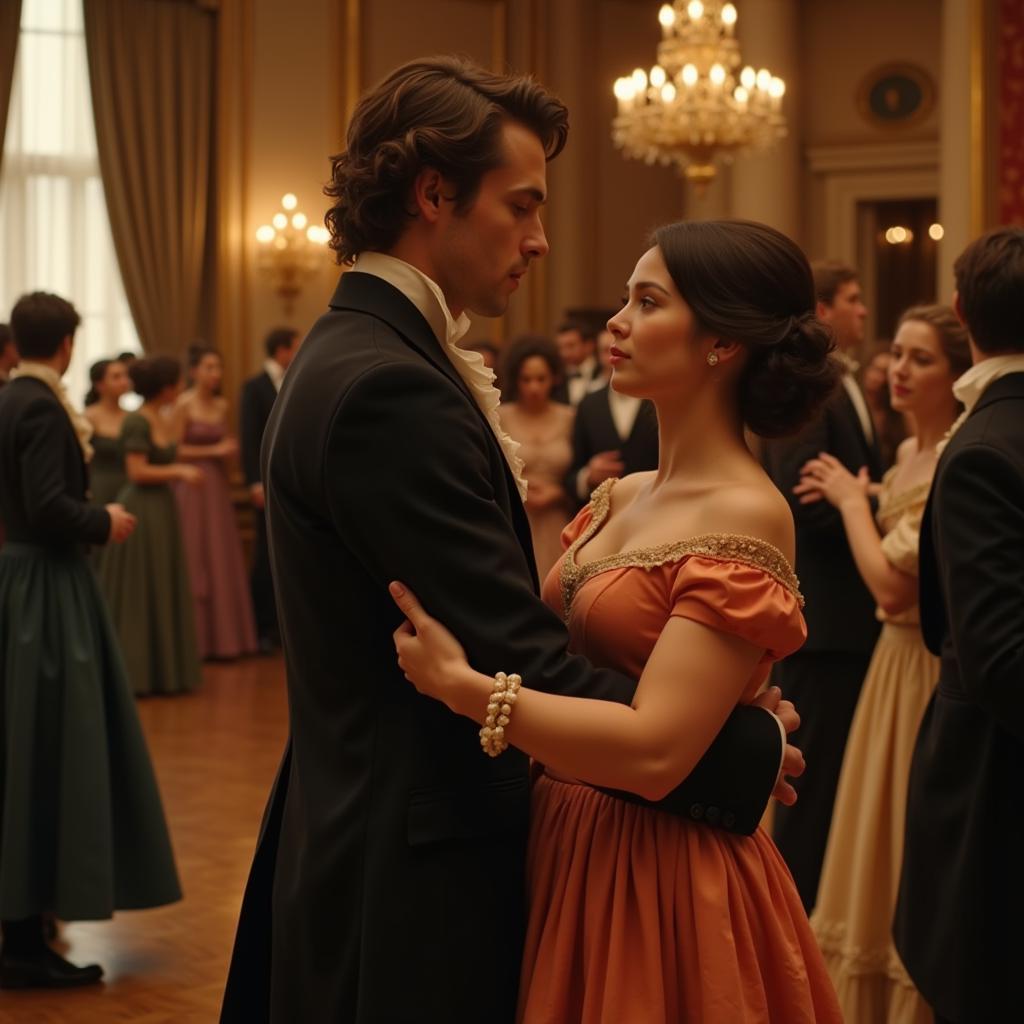Jane Austen’s beloved novel, Pride and Prejudice, has been adapted for the screen numerous times, with each adaptation offering its own interpretation of the story and characters. However, the question that often arises among ardent fans is: how faithful are these adaptations, particularly the popular movies, to the original text? Let’s delve into the world of Mr. Darcy and Elizabeth Bennet to examine the accuracies and creative liberties taken in bringing this literary masterpiece to life.
Capturing the Essence: A Comparison of Key Elements
While visual mediums like film necessitate certain adaptations, a successful adaptation lies in capturing the essence of the source material. The Pride and Prejudice movies, particularly the acclaimed 2005 version starring Keira Knightley and Matthew MacFadyen, often excel in portraying the societal norms, romantic tension, and witty banter that define Austen’s work.
 Pride and Prejudice Movie Scene
Pride and Prejudice Movie Scene
For instance, the movie accurately portrays the societal pressure on women to marry well, a central theme in the novel. Elizabeth’s defiance of these expectations, driven by her independent spirit and sharp wit, is effectively conveyed in both mediums. Similarly, the palpable tension between Elizabeth and Darcy, fueled by their pride and prejudices, translates beautifully on screen.
Creative Liberties: Condensing a Complex Narrative
Adapting a novel as intricate as Pride and Prejudice for a two-hour film inevitably requires condensing storylines and sometimes, altering details. One notable change often seen in adaptations is the simplification of character relationships. For example, the complexities of the Bennet family dynamics, particularly the strained relationship between Elizabeth and her mother, might receive less emphasis in favor of highlighting the central romance.
Furthermore, certain subplots might be truncated or omitted entirely. The Wickham storyline, while crucial for understanding Elizabeth’s initial prejudice against Darcy, might be streamlined in movie adaptations. While such changes can alter the pacing and depth of certain narratives, they often serve the purpose of creating a cohesive and engaging cinematic experience.
The Power of Visual Storytelling
Despite the challenges of adaptation, movies possess a unique advantage: visual storytelling. Costume design, set decoration, and cinematography can vividly transport viewers to the Regency era, immersing them in the world of the novel. The 2005 adaptation, in particular, is lauded for its stunning visuals, from the picturesque English countryside to the elegant ballrooms, effectively capturing the ambiance of Austen’s world.
 Pride and Prejudice Ballroom Scene
Pride and Prejudice Ballroom Scene
Furthermore, skilled actors can breathe life into Austen’s characters, conveying their personalities and emotions with nuance. The chemistry between the actors playing Elizabeth and Darcy, for instance, plays a crucial role in conveying the passionate tension that draws readers and viewers alike to their love story.
Conclusion: A Celebration of Enduring Themes
While Pride and Prejudice movie adaptations may take creative liberties, their impact lies in their ability to introduce new audiences to Austen’s timeless story and its enduring themes of love, class, and societal expectations. While the novels offer a deeper exploration of character complexities and societal nuances, the movies provide a visually engaging and emotionally resonant entry point into Austen’s world. Ultimately, both mediums offer unique and valuable perspectives on this beloved classic.